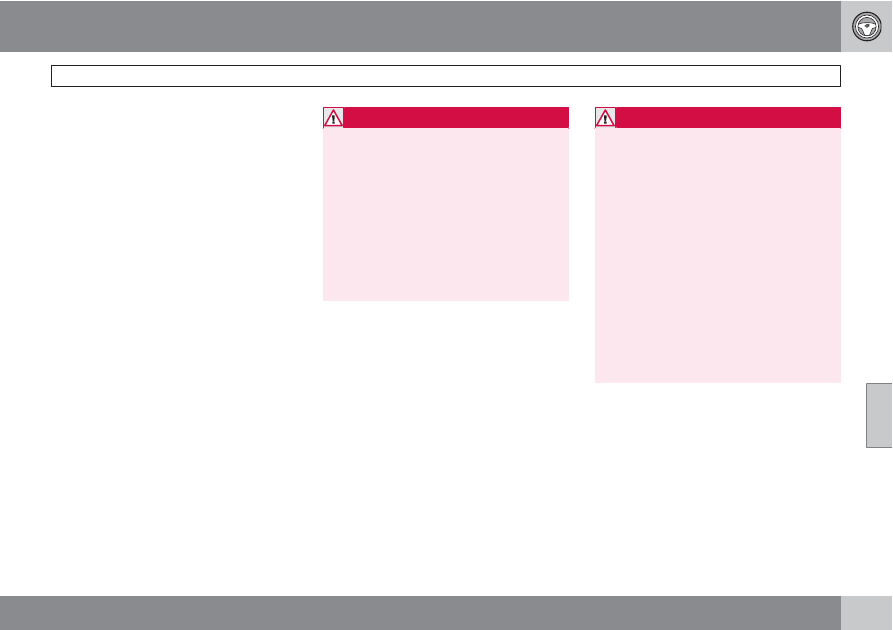Volvo C30 (2013 year). Instruction - part 9

06 Starting and driving
Brake system
06
*
Option/accessory, for more information, see Introduction.
159
Brake lights
The brake lights come on automatically when
the brakes are applied.
Adaptive brake lights
The adaptive brake lights activate in the event
of sudden braking or if the ABS system is acti-
vated. This function causes an additional tail-
light on each side of the vehicle to illuminate to
help alert vehicles traveling behind.
The adaptive brake lights activate if:
•
The ABS system activates for more than
approximately a half second
•
In the event of sudden braking while the
vehicle is moving at speeds above approx-
imately 6 mph (10 km/h)
When the vehicle has come to a stop, the brake
lights and additional taillights remain on for as
long as the brake pedal is depressed or until
braking force on the vehicle is reduced.
Brake pad inspection
On vehicles equipped with a jack*, the condi-
tion of the brake pads can be checked by rais-
ing the vehicle (see page 200 for information
about using the jack and removing a wheel)
and performing a visual inspection of the brake
pads.
WARNING
•
If the vehicle has been driven immedi-
ately prior to a brake pad inspection, the
wheel hub, brake components, etc., will
be very hot. Allow time for these com-
ponents to cool before carrying out the
inspection.
•
Apply the parking brake and put the
gear selector in the Park (P) position.
•
Block the wheels standing on the
ground, use rigid wooden blocks or
large stones.
WARNING
•
Use the jack intended for the vehicle
when changing a tire. For any other job,
use stands to support the vehicle.
•
The jack should be kept well-greased
and clean, and should not be damaged.
•
Be sure the jack is on a firm, level, non-
slippery surface.
•
No objects should be placed between
the base of jack and the ground, or
between the jack and the attachment
bar on the vehicle.
•
The jack must correctly engage the jack
attachment.
•
Never allow any part of your body to be
extended under a vehicle supported by
a jack.
Brake circuit malfunction
The brake system is a hydraulic system con-
sisting of two separate brake circuits. If a prob-
lem should occur in one of these circuits, it is
still possible to stop the vehicle with the other
brake circuit.
If the brake pedal must be depressed farther
than normal and requires greater foot pressure,
the stopping distance will be longer.